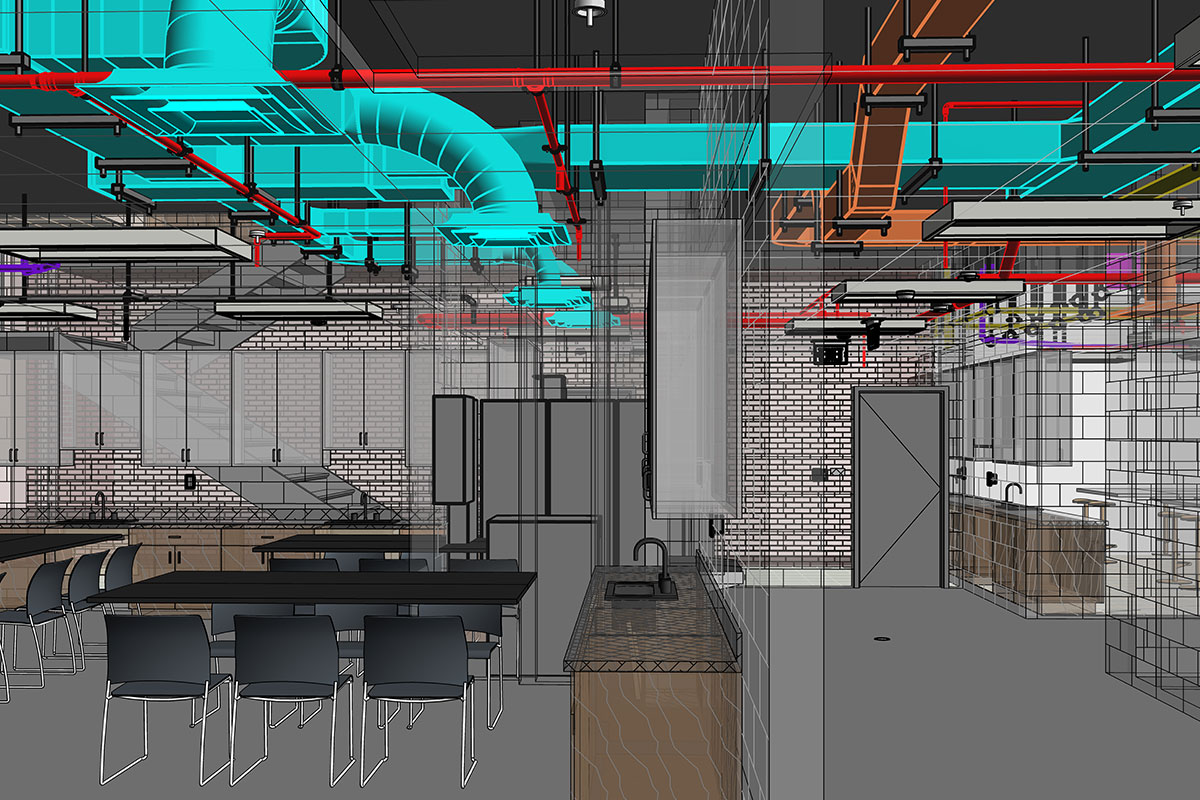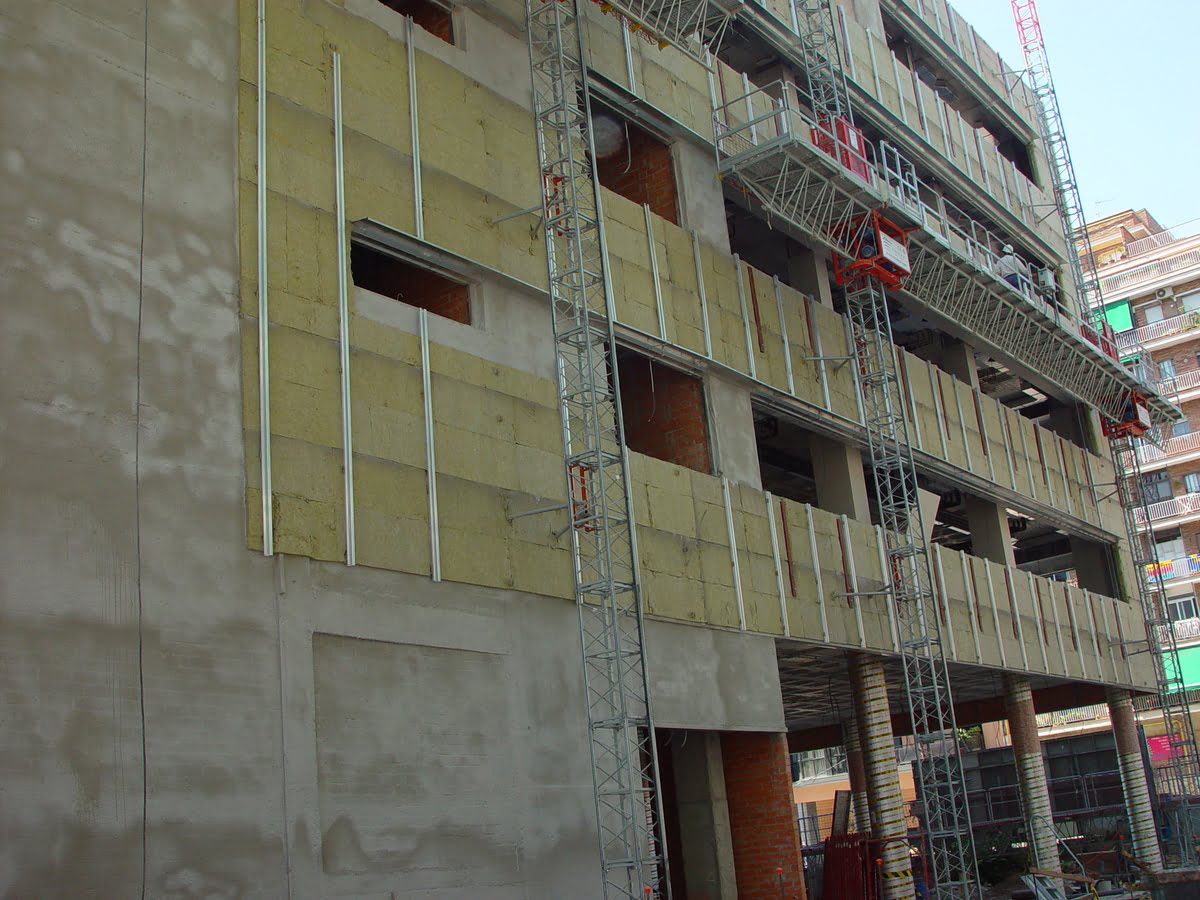Home>diy>Building & Construction>What Does LOD Mean In Construction


Building & Construction
What Does LOD Mean In Construction
Modified: December 7, 2023
"LOD, or Level of Development, is a crucial concept in building construction. Learn what LOD means and how it impacts the construction process."
(Many of the links in this article redirect to a specific reviewed product. Your purchase of these products through affiliate links helps to generate commission for Storables.com, at no extra cost. Learn more)
Introduction
In the world of construction, precision and accuracy are paramount. From the initial design phase to the final construction process, every detail matters. This is where the concept of LOD, or Level of Development, comes into play. LOD is a crucial factor in ensuring the successful completion of construction projects.
LOD refers to a measure of the amount of information and detail that is available for a particular element or component within a construction project. It provides a standardized way of communicating the level of completeness and accuracy of the information related to a specific element, such as walls, floors, and doors.
The LOD concept was first introduced by the American Institute of Architects (AIA) and has since become an industry standard. By establishing a clear understanding of the level of detail, design teams, contractors, and project stakeholders can efficiently collaborate and make informed decisions throughout the construction process.
Over the years, LOD has gained recognition and importance due to its ability to streamline construction workflows, minimize errors and conflicts, and improve overall project efficiency. In this article, we will explore the definition, importance, uses, benefits, challenges, and best practices of implementing LOD in construction projects.
Key Takeaways:
- LOD in construction ensures precision and collaboration by standardizing the level of detail for building components, leading to improved efficiency, reduced errors, and better project outcomes.
- Implementing LOD comes with challenges, but by establishing clear guidelines, engaging stakeholders, and utilizing collaborative BIM tools, construction projects can overcome obstacles and maximize the benefits of LOD.
Definition of LOD
Level of Development (LOD) is a standardized system used in the construction industry to define the level of detail and accuracy of information for building components at different stages of a project. It provides a framework for classifying and communicating the level of completeness of various elements, such as walls, roofs, MEP systems, and finishes. The LOD framework enables project stakeholders to have a clear understanding of what can be expected at each stage of the construction process.
The LOD system is typically divided into different levels, ranging from LOD 100 to LOD 500. Each level represents an increasing level of detail and accuracy of the information associated with a particular component. At LOD 100, the information is very basic and schematic, representing the overall shape or size of the element. As the LOD progresses, more detailed information is added, such as dimensions, materials, and connections, leading up to LOD 500, which represents a fully detailed and accurate model or representation of the element.
It is important to note that the LOD levels can vary depending on the project scope, specifications, and requirements. However, there is a general consensus within the industry on the basic definitions and expectations associated with each LOD level, which helps to ensure consistency and clarity in communication.
The LOD framework is especially useful during the design and construction stages of a project. It allows architects, engineers, contractors, and other stakeholders to have a shared understanding of the level of detail that is necessary to move forward with the project. By using LOD, project teams can avoid misinterpretations, optimize coordination efforts, and make informed decisions throughout the construction process.
Importance of LOD in Construction
Level of Development (LOD) plays a crucial role in ensuring the success of construction projects. It provides a standard framework for defining and communicating the level of detail and accuracy of information associated with building components. Here are some key reasons why LOD is important in construction:
- Clarity and Consistency: LOD helps to establish clear expectations and guidelines for the level of detail required at each stage of the construction process. This ensures consistency in communication among project stakeholders and reduces the risk of misunderstandings or discrepancies in the project documentation.
- Efficient Collaboration: With LOD, architects, engineers, contractors, and other team members have a common understanding of the information available for each building component. This facilitates effective collaboration and coordination, as everyone is working with the same level of detail, reducing errors and confusion during the construction process.
- Quality Control and Risk Mitigation: LOD allows project teams to identify potential design conflicts, coordination issues, or constructability challenges at earlier stages. By having a clear understanding of the level of development for each component, it becomes easier to detect and rectify any errors or discrepancies before construction begins, reducing costly rework and delays.
- Budget and Schedule Optimization: LOD provides a foundation for accurate quantity takeoffs, cost estimating, and scheduling. By having detailed and reliable information about the building components at each LOD level, project teams can make more accurate cost and time projections, helping to optimize the budget and schedule of the project.
- Improved Decision Making: LOD enables project teams to make informed decisions regarding design alternatives, material selections, and construction methods. With more detailed and accurate information, stakeholders can evaluate different options and assess their impact on the project’s cost, schedule, and performance, leading to better decision-making and project outcomes.
In summary, LOD is essential in construction as it promotes clarity, collaboration, quality control, and informed decision-making. By implementing LOD standards, construction projects can benefit from improved efficiency, reduced risks, and better project outcomes.
Uses of LOD in Construction Projects
Level of Development (LOD) is a valuable tool that serves various purposes in construction projects. Here are some key uses of LOD:
- Design and Planning: LOD is used during the design phase to define the level of detail required for each building component. It helps architects and engineers in developing accurate and comprehensive design models that can be used for visualization, analysis, and coordination. By having clear LOD guidelines, design teams can ensure that all necessary information is included in the design documents.
- Coordination and Clash Detection: LOD is crucial for coordination efforts among different disciplines involved in a construction project. It enables clash detection, where potential conflicts or clashes between different building components are identified in the design phase. This helps in resolving issues before they occur on the construction site, minimizing rework and delays.
- Quantity Takeoffs and Cost Estimation: LOD provides a basis for accurate quantity takeoffs and cost estimation. By specifying the LOD level for each component, estimators can determine the level of detail required for quantity takeoffs. This ensures that the estimated quantities and costs are aligned with the desired level of representation for each element.
- Procurement and Fabrication: LOD is used to communicate the level of detail required for procuring materials, components, and equipment. It ensures that suppliers and fabricators have a clear understanding of the expected level of accuracy and information for the products they provide. This minimizes the risk of miscommunication and ensures that the delivered materials align with the design intent.
- Construction Management: LOD plays a crucial role in construction management by providing a reference for construction sequencing, installation, and quality control. Contractors can use LOD to understand the level of detail required for each element during the construction phase. It guides the coordination of subcontractors, installation sequencing, and quality inspection procedures.
- Facilities Management: LOD is valuable even after the construction phase is complete. Facility managers can leverage LOD to understand the level of detail provided in the as-built model or documentation. This information is essential for managing maintenance, repairs, renovations, and future facility management activities.
Overall, LOD is used throughout the lifecycle of a construction project, from design to facilities management. Its versatile applications ensure that all project stakeholders are aligned with the desired level of detail, leading to improved coordination, cost estimation, construction management, and long-term facility maintenance.
When working in construction, LOD stands for Level of Development, which refers to the amount of detail and accuracy in a BIM model. Understanding LOD is crucial for coordinating and communicating project information effectively.
Benefits of Implementing LOD in Construction
Implementing Level of Development (LOD) guidelines in construction projects offers numerous benefits that contribute to the overall success and efficiency of the project. Here are some key advantages of embracing LOD:
- Clarity and Improved Communication: LOD provides a standardized language for communicating the level of detail and accuracy required for each building component. This clarity eliminates ambiguity and ensures that all project stakeholders have a shared understanding of the information available at each stage. It improves communication and reduces the risk of misinterpretations or incorrect assumptions.
- Enhanced Collaboration and Coordination: LOD facilitates effective collaboration among architects, engineers, contractors, and subcontractors. With a clear understanding of the level of detail, teams can work together more efficiently, sharing relevant information and resolving issues in a timely manner. It improves coordination efforts, minimizes conflicts, and streamlines the construction process.
- Increased Efficiency and Productivity: LOD helps optimize project workflows by providing structured guidelines for design, procurement, fabrication, and construction activities. By having a clear framework for the level of development, teams can prioritize their efforts, allocate resources effectively, and avoid unnecessary rework or delays. It enhances overall project efficiency and productivity.
- Reduced Errors and Risk Mitigation: LOD allows for early detection and resolution of design conflicts, clashes, and constructability issues. Through clash detection and coordination efforts, teams can identify and address these issues before they impact construction activities. This proactive approach minimizes expensive rework, reduces risks, and improves project outcomes.
- Accurate Cost Estimation and Budget Optimization: LOD enables accurate quantity takeoffs, estimations, and cost projections. By specifying the level of detail required, project teams can ensure that the estimated quantities and costs align with the intended scope of work. This improves cost control and budget optimization throughout the project lifecycle.
- Improved Project Delivery and Client Satisfaction: Implementing LOD results in better project planning, coordination, and quality control. This, in turn, leads to improved project delivery, meeting or exceeding client expectations. Clients benefit from more accurate visualization, reduced conflicts, and enhanced decision-making, resulting in increased satisfaction with the final construction outcome.
In summary, implementing LOD in construction projects provides various benefits, including improved communication, collaboration, efficiency, and risk mitigation. It promotes accurate cost estimation, budget optimization, and ultimately leads to successful project delivery and satisfied clients.
Read more: What Does ISO Mean In Construction
Challenges in Implementing LOD in Construction
While Level of Development (LOD) has many advantages and is widely adopted in the construction industry, there are several challenges that can arise during its implementation. Here are some common challenges faced when implementing LOD:
- Lack of Consistency and Standardization: One of the key challenges is the lack of consistency and standardization in LOD definitions and expectations across different projects and organizations. This can lead to confusion and misinterpretation when communicating the required level of detail, making it difficult to achieve a common understanding among all project stakeholders.
- Complexity and Time Constraints: Implementing LOD can be complex and time-consuming, especially when considering the wide range of building components and the level of detail required for each. It requires meticulous planning, coordination, and continuous monitoring throughout the project lifecycle, which can strain project resources and schedules.
- Technical Limitations and Tools: Adequate software tools and technologies are essential for effectively implementing LOD. However, some organizations may face challenges in adopting and utilizing such tools due to technical limitations, lack of training, or compatibility issues. This can hinder the successful implementation of LOD and limit its benefits.
- Resistance to Change and Adoption: As with any new methodology or process, implementing LOD may face resistance from stakeholders who are accustomed to traditional practices. This resistance can stem from a lack of understanding, skepticism about the benefits of LOD, or concerns about the initial learning curve and associated costs.
- Data Availability and Accuracy: LOD relies heavily on the availability and accuracy of data and information related to building components. Incomplete or inaccurate data can compromise the effectiveness of LOD implementation and lead to errors or discrepancies in the model. It requires thorough data management and validation processes to ensure reliability and consistency.
- Project-Specific Requirements: Each construction project may have unique requirements and constraints that influence the LOD implementation. Balancing these project-specific requirements with the desired LOD levels can be challenging, as it may require trade-offs and compromises to achieve the desired outcomes within the given project constraints.
Despite these challenges, it is important to address them proactively and implement strategies to overcome them. This can involve creating clear and standardized LOD guidelines, investing in training and technology, fostering a culture of collaboration and openness to change, and ensuring the availability and accuracy of data throughout the project.
Best Practices for Implementing LOD in Construction
Implementing Level of Development (LOD) in construction projects requires careful planning and execution. By following best practices, project teams can effectively leverage LOD to enhance collaboration, coordination, and overall project outcomes. Here are some key best practices for implementing LOD:
- Establish Clear LOD Guidelines: Define clear and consistent LOD definitions and guidelines within the project team. These guidelines should outline the expected level of detail for each building component at different stages of the project. By establishing common expectations, project stakeholders can align their efforts and avoid misunderstandings.
- Engage Stakeholders Early: Involve all relevant stakeholders, including architects, engineers, contractors, and subcontractors, in the LOD implementation process from the early stages. This promotes collaboration and ensures that everyone has a shared understanding of the LOD requirements and objectives.
- Implement Training and Education: Provide training and education on LOD concepts, tools, and processes to all relevant team members. This helps them understand the benefits of LOD and equips them with the necessary knowledge and skills to implement it effectively.
- Utilize Collaborative BIM Tools: Collaborative Building Information Modeling (BIM) tools play a vital role in implementing LOD. These tools facilitate efficient sharing, coordination, and integration of LOD models and information among project stakeholders. Utilize these tools to streamline collaboration and reduce errors.
- Regularly Review and Update LOD: LOD requirements may evolve throughout the lifecycle of the project. Regularly review and update LOD guidelines to accommodate project-specific needs, technological advancements, and industry best practices. Continuous improvement and adaptation are essential to maximize the benefits of LOD.
- Ensure Data Accuracy and Quality: Accurate and reliable data is crucial for successful LOD implementation. Establish data management processes to ensure data accuracy, consistency, and integrity. Regularly validate and update data to avoid propagation of errors in LOD models and documentation.
- Promote Open Communication and Collaboration: Foster a culture of open communication and collaboration among project stakeholders. Encourage frequent discussions and coordination meetings to address any conflicts, clarify expectations, and ensure alignment with LOD requirements. Effective communication enhances the implementation of LOD and strengthens project outcomes.
- Document and Track LOD Progress: Maintain proper documentation and track the progress of LOD implementation throughout the project. Regularly monitor and communicate the LOD status to all stakeholders to maintain transparency and ensure adherence to the established guidelines.
- Regular Quality Assurance and Control: Implement a robust quality assurance and control process to ensure that LOD models and documentation meet the defined requirements. Perform regular checks and reviews to identify and rectify any errors or inconsistencies timely, reducing the risk of conflicts and costly rework.
By following these best practices, construction projects can successfully implement LOD and harness its benefits, including improved collaboration, coordination, and project outcomes. LOD, when effectively implemented, has the potential to streamline construction processes, enhance communication, and deliver successful projects.
Conclusion
Level of Development (LOD) plays a vital role in modern construction practices. It provides a standardized system for defining the level of detail and accuracy of information associated with building components at different stages of a project. LOD enhances communication, collaboration, and coordination among project stakeholders, leading to improved project efficiency and outcomes.
With clear LOD guidelines, project teams can effectively plan, design, and construct buildings with precision and accuracy. LOD ensures that all stakeholders have a shared understanding of the level of detail required for each element, minimizing confusion and errors during the construction process.
Implementing LOD in construction projects offers a range of benefits. It promotes efficient collaboration, reduces conflicts, and enhances decision-making. LOD improves cost estimation, budget control, and project scheduling, leading to optimized project outcomes. Moreover, LOD helps mitigate risks and improves overall project quality by allowing early clash detection and coordination.
However, there are challenges to overcome during LOD implementation. These include ensuring consistency and standardization, addressing technical limitations, and managing data accuracy and availability. By proactively addressing these challenges and following best practices, project teams can overcome obstacles and maximize the benefits of LOD.
In conclusion, LOD is a valuable tool for the construction industry, providing a structured approach to managing and communicating the level of detail throughout the project lifecycle. Its proper implementation leads to improved collaboration, streamlined construction workflows, and successful project delivery. By embracing LOD, construction projects can enhance efficiency, reduce risks, and achieve better overall results.
Frequently Asked Questions about What Does LOD Mean In Construction
Was this page helpful?
At Storables.com, we guarantee accurate and reliable information. Our content, validated by Expert Board Contributors, is crafted following stringent Editorial Policies. We're committed to providing you with well-researched, expert-backed insights for all your informational needs.















0 thoughts on “What Does LOD Mean In Construction”